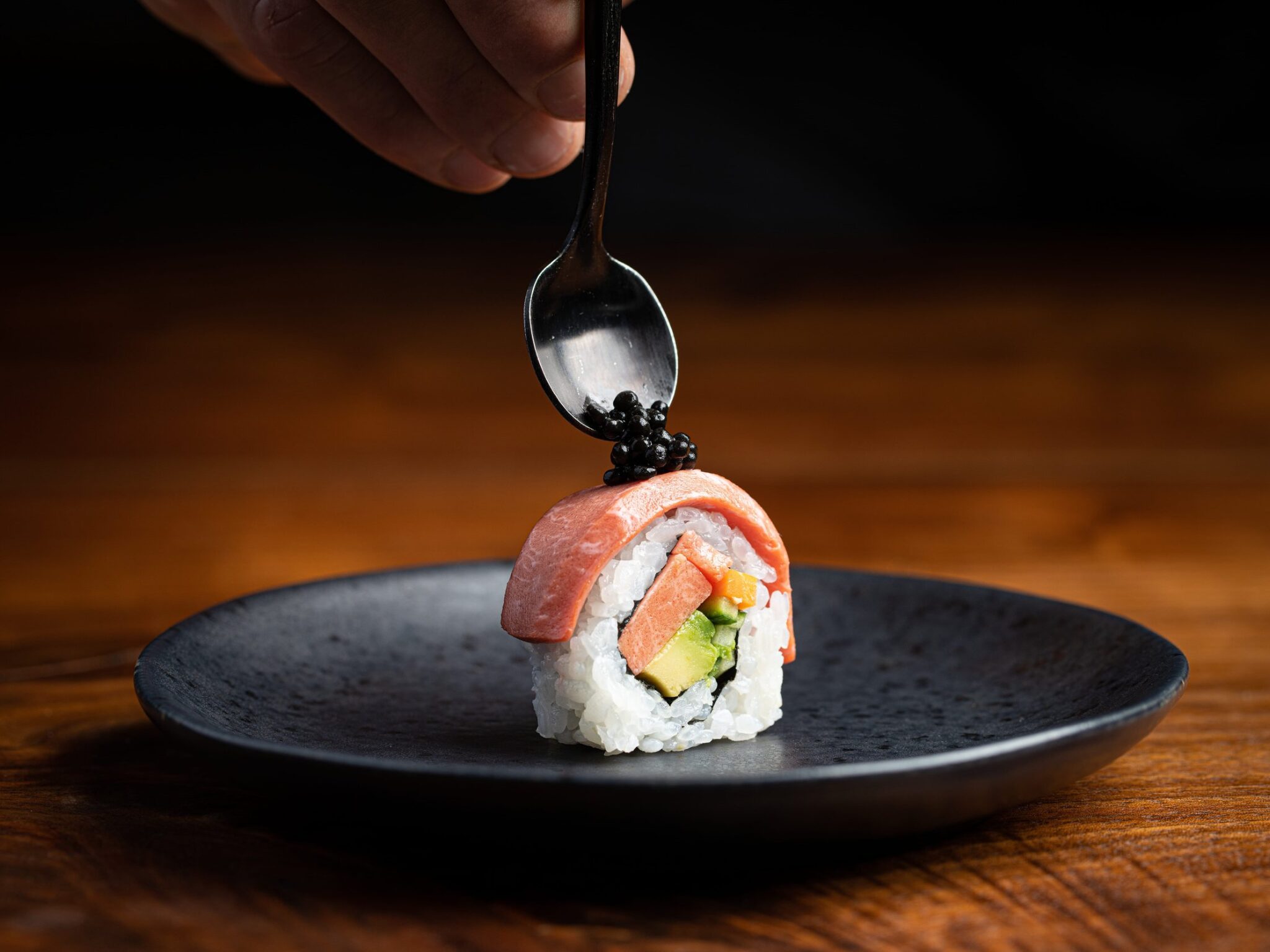42% of Japanese Consumers Open to Trying Cultivated Meat, But Safety Remains Key Concern
6 Mins Read
Over four in 10 Japanese consumers are willing to give cultivated meat and seafood a taste as long as it’s safe, but 58% have never heard of it, highlighting the challenge for the country’s alternative protein sector.
In April, the regulatory framework for cultivated meat in Japan will become more complicated. While continuing to oversee food safety, the Ministry of Health, Labour and Welfare will transfer its food hygiene standards division to the Consumer Affairs Agency. This means companies must liaise with two agencies on regulatory conversations, but makes prime minister Fumio Kishida the ultimate authority on these matters.
But if a new survey by the APAC Society for Cellular Agriculture (APAC-SCA) is anything to go by, stronger regulations to determine the safety of these foods are a must for Japan’s population. The 1,000-person poll revealed that as long as they’re safe, 42% of consumers are willing to try cultivated meat and seafood products.
However, 64% of respondents don’t know if cultivated proteins are safer than their conventional counterparts (though 19% found no difference in safety). For 44%, the presence of Japanese government regulations is the most important element in determining the safety of cultivated meat and seafood, with women in their 20s, 40s and 60s chiming most with this sentiment.
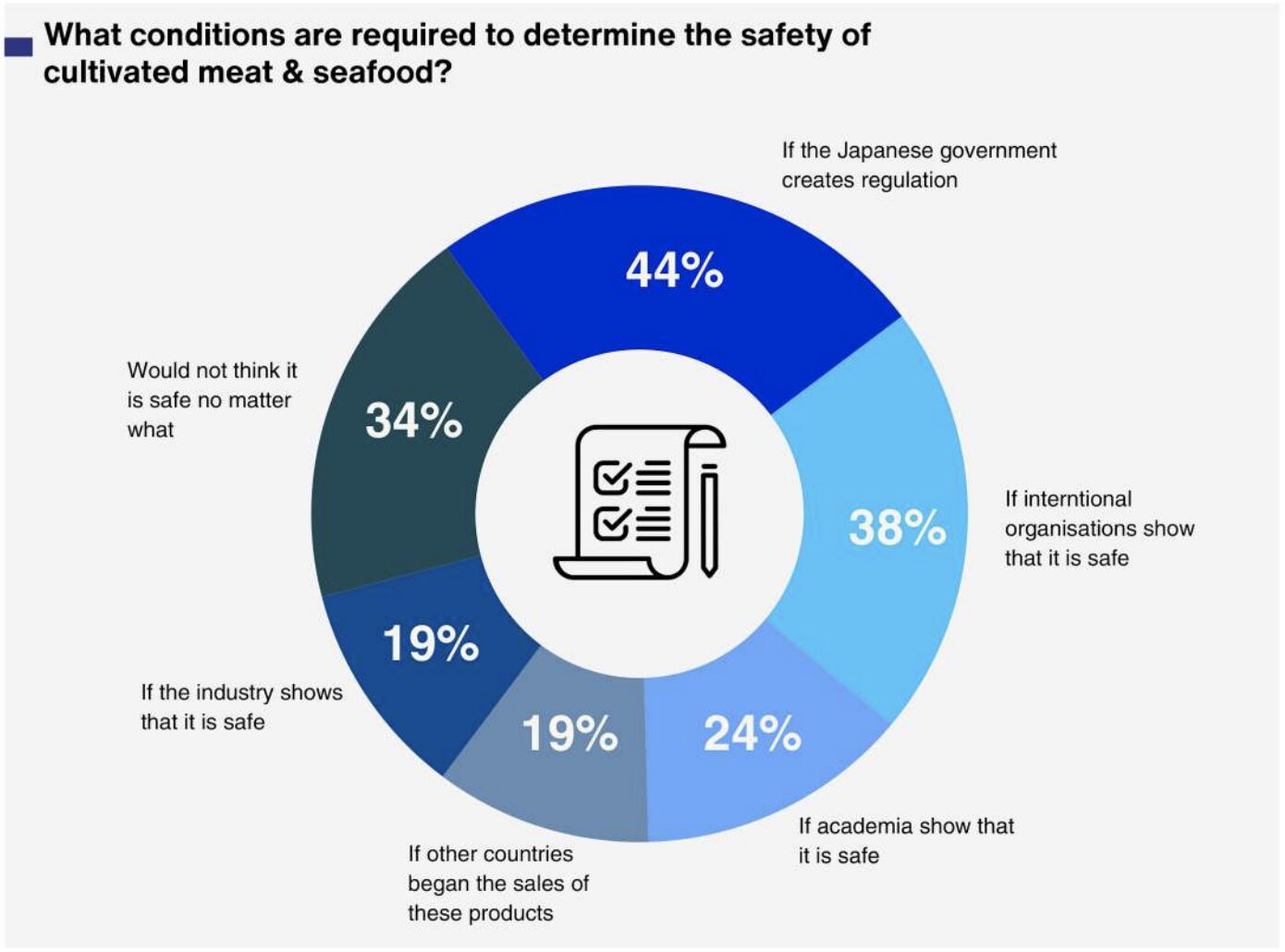
If international organisations or academia can assure safety, that would satisfy 38% and 24% of consumers, respectively. However, safety assurances from the industry and the sale of these products in other countries would have little effect in swaying these consumers, with only 19% being satisfied with these options. Conversely, 34% would not find these foods safe, whatever the case.
Health and price important, and youth attitudes encouraging
APAC-SCA’s survey highlights that 91% of Japan’s consumers eat meat, mirroring the figure from a Food Frontier report from December. Interestingly, there are more vegans (1%) than flexitarians (0.4%) or pescetarians (0.3%). But there is a gap in consumer awareness about cultivated meat, with 58% of people in Japan having never heard of it. And while 39% are familiar with it, only a further 3% understand the concept in detail.
Apart from the food safety aspect, health and price are key for these consumers when it comes to trying cultivated meat, cited by 25% and 23%, respectively. But an even greater number (30%) say they will not try these products. Safety (44%) and health (33%) are similarly the top concerns for respondents, followed by taste (27%).
Taste represents the leading expectation from these foods too, followed by a diversification of food options, and appearance – although 37% chose the ‘none applies’ option, further highlighting their unfamiliarity with the concept. of cultivated proteins and lack of experience in consuming such products.
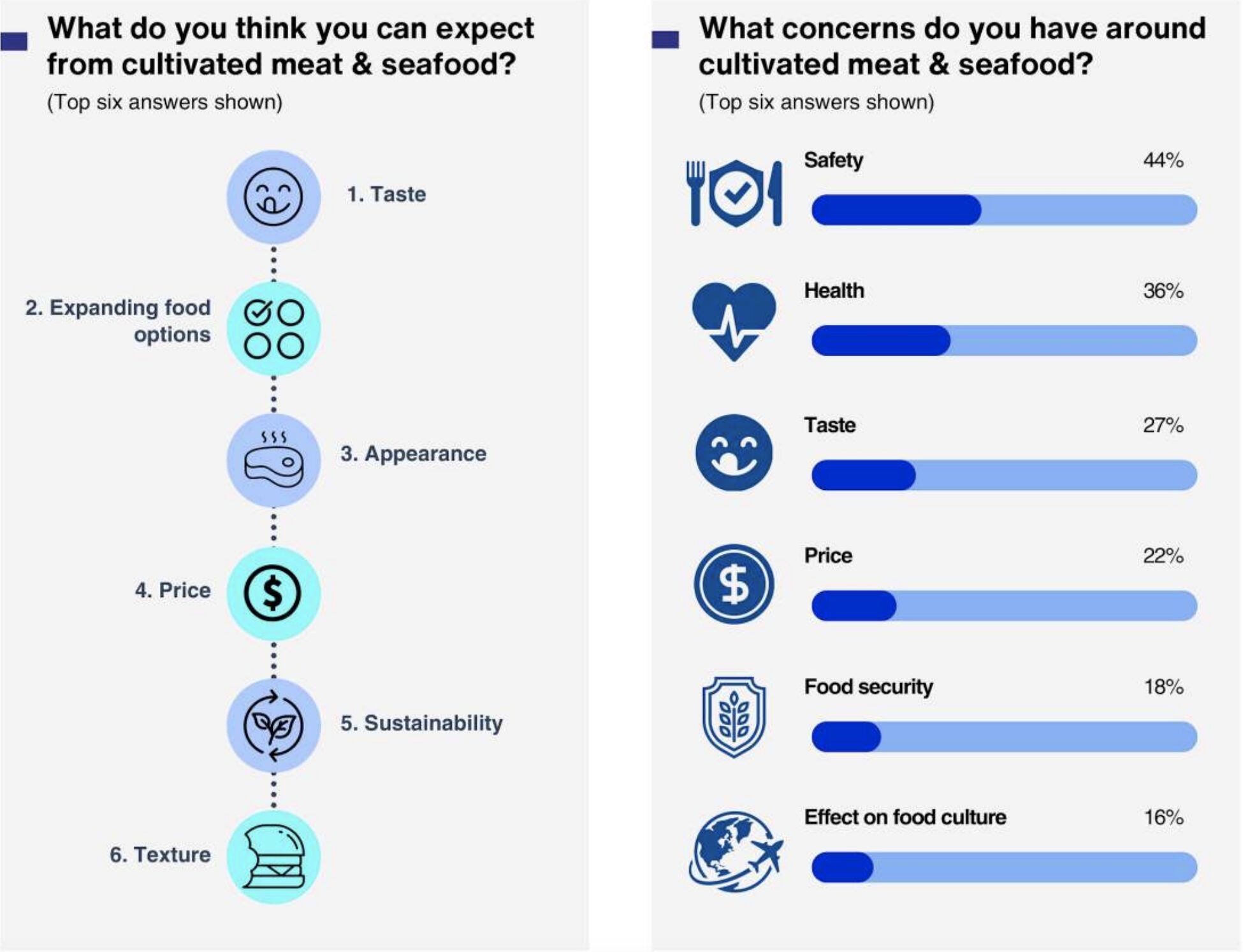
A fifth (21%) of consumers are willing to buy cultivated meat products if they’re priced the same as their conventional versions, but only 6% would be willing to pay for them if they cost double or more. Understandably, 40% would purchase them if they’re cheaper, though 33% wouldn’t buy them at all. Research by McKinsey has shown that it will take until 2030 for cultivated meat to reach price parity, outlining the importance of scaling up production and increased funding for the sector.
There was a notable shift in acceptance with age, as younger Japanese consumers exhibited a more welcoming attitude towards cultivated meat and seafood. In terms of concerns about these foods, 35% did not select any options from the list – higher than the overall average. Men in their 20s also expressed the greatest interest in buying these products, with 18% willing to do so even if they cost double.
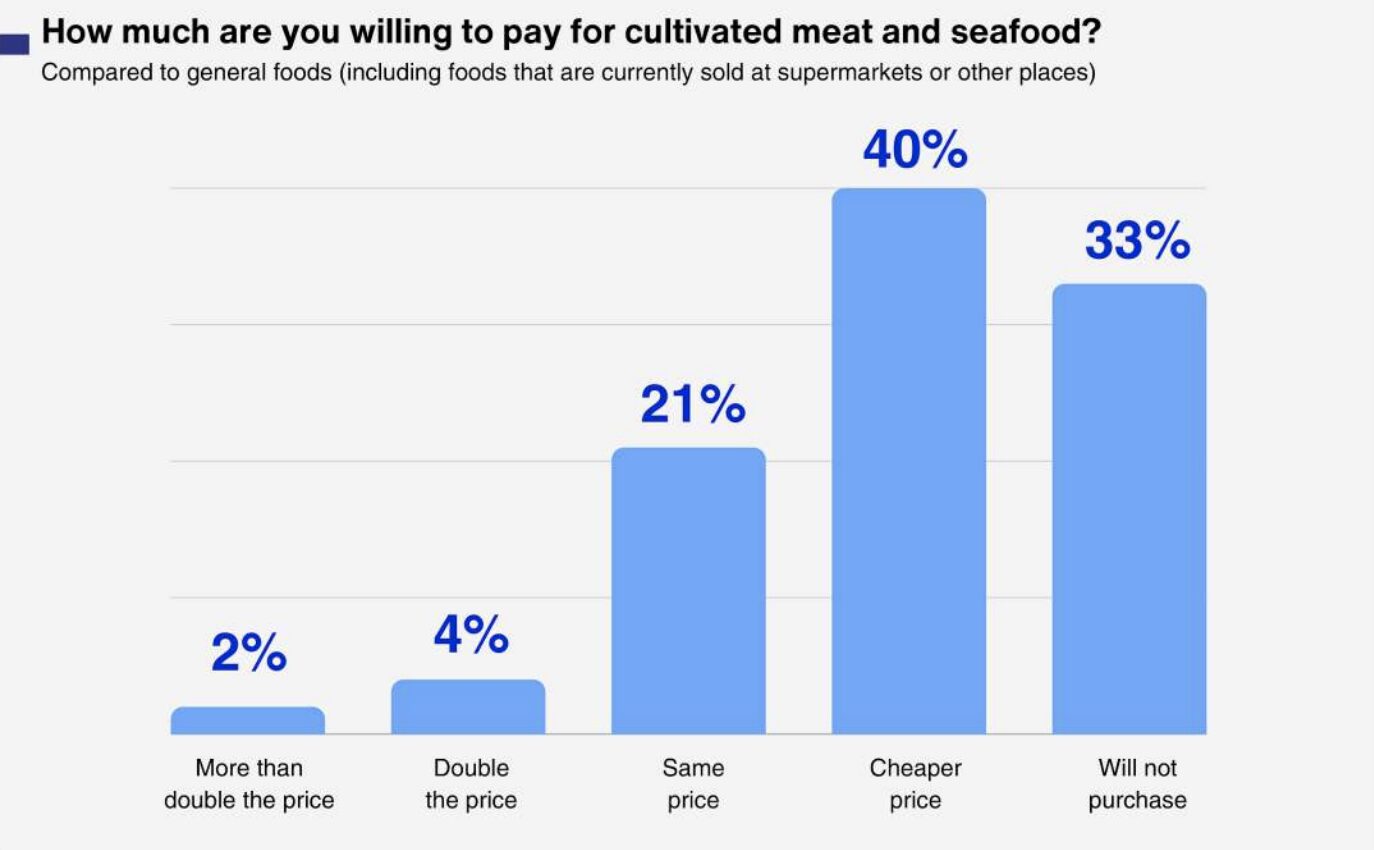
“This survey reveals interesting characteristics about the next generation of Japanese consumers. More than half of men in their 20s have heard of ‘cell-based foods’, nearly 30% are interested in trying them, and a whopping 62% answered that they would eat these products if they were cooked,” said Akira Igata, director of APAC-SCA partner the Japan Association for Cellular Agriculture and the survey’s analyst. “Understanding the proclivities of the next generation of Japanese consumers would be critical for companies interested in breaking into the Japanese market.”
What about feeding cultivated meat to children? Half of the respondents are unsure if they’ll do so, while 33% definitely wouldn’t. “For the industry, this signifies the importance of capturing the interest of consumers who are neutral but not opposed to the concept of cultivated meat and seafood,” the report stated.
Collaboration and direct communication key to establishing food safety
Prime minister Kishida already endorsed cellular agriculture last year, with plans to boost the sector to reduce the country’s climate footprint. And between 2020 and 2023, private investment in Japan’s alternative protein sector was dominated by cultivated meat, which made up 76% ($54M) of the total, according to the Good Food Institute APAC. A host of food giants are getting involved in cellular agriculture, including Nipponham and Nissin.
In December, the Japanese government invested ¥1.87B ($13.1M) in local cellular agriculture company IntegriCulture, which claims to have grown cultivated chicken and duck via a tech platform that can bring down costs to under $3 per kg of meat by 2025, and under $1 soon after.
But although the price aspect is important, safety is still crucial for consumers in Japan, which is why APAC-SCA recommends establishing a direct line of communication with regulators to convey information that can exhibit the safety potential of cultivated meat and seafood, which can be in the form of pre-market consultation services or a regulatory sandbox framework.
“Communicating the safety of cultivated meat and seafood products has always been the key focus for the industry,” said APAC-SCA programme director Peter Yu. “The 2023 report released by the Food and Agriculture Organisation and the World Health Organisation concluded that many of the hazards identified in cultivated foods already exist in conventionally produced foods and livestock agriculture. Cultivated meat and seafood are safe for consumption if produced and handled well.”
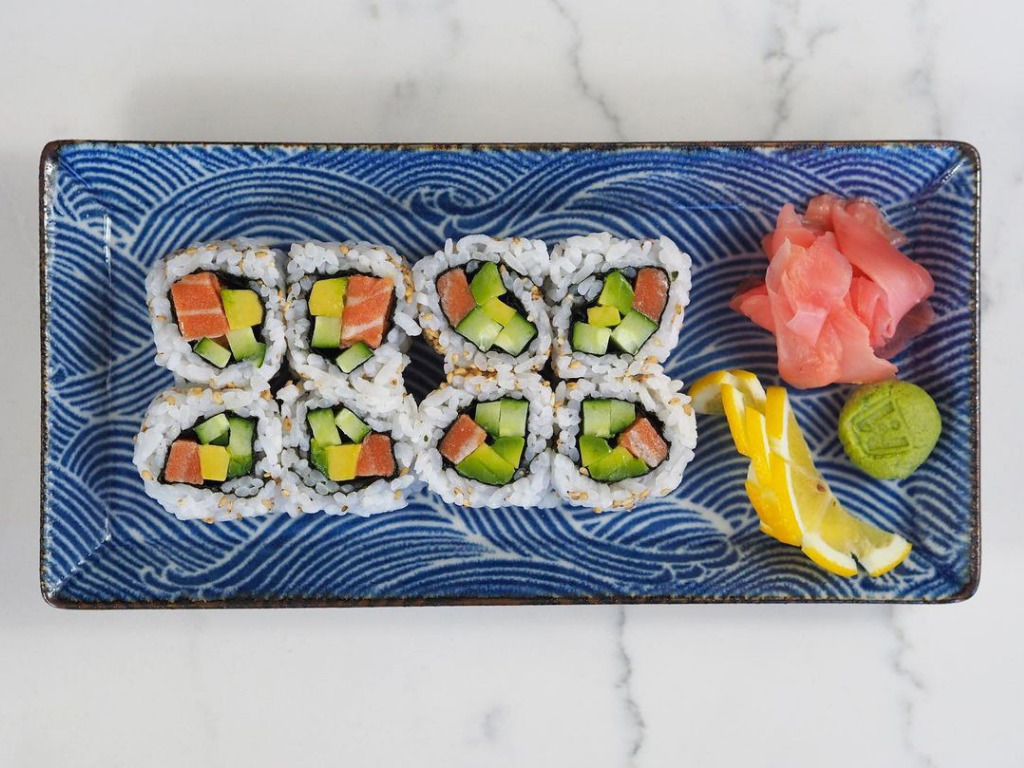
The report also suggests regulators and industry players can find common consensus on topics to support consistent approaches to safety assessments by participating in activities like the APAC Regulatory Coordination Forum. Likewise, regional collaboration between government agencies, academia and companies can help accelerate R&D efforts via resource and knowledge sharing.
Developing “message maps” for awareness of the benefits of cultivated meat and seafood can help raise consumer confidence and trust too, and socialising international reports can increase public awareness and assure the safety of these products.
“There is a great opportunity and incentive for close collaboration between the government and industry to engage consumers in the food safety dialogue for cultivated meat and seafood,” added Yu. “This will increase consumer confidence and drive widespread acceptance in the long run. Ensuring that cultivated meat and seafood is available as a complementary food option in Japan is vitally important for food security without environmental and ethical concerns associated with conventional meat production.”

